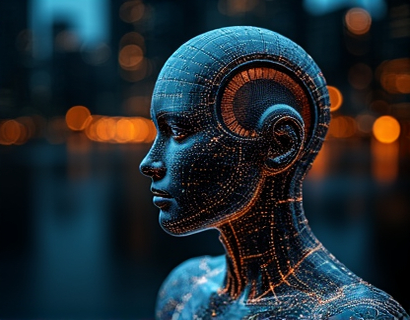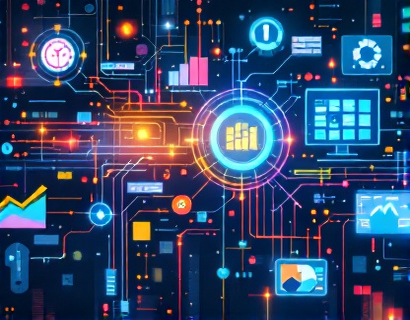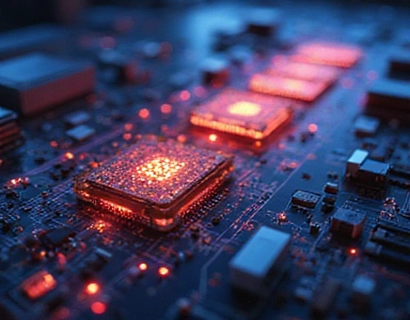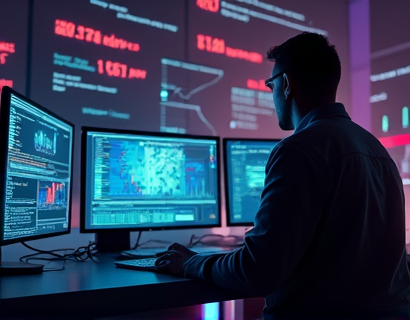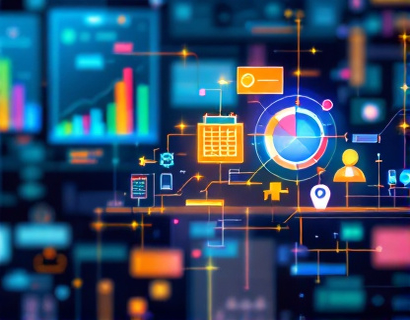AI and Crypto Synergy: Revolutionizing Digital Experiences for the Future
The intersection of artificial intelligence (AI) and cryptocurrency is creating a transformative landscape for digital experiences. This synergy is not just about combining two cutting-edge technologies but about redefining how we interact, secure, and monetize digital content. As tech-savvy innovators and crypto enthusiasts explore this frontier, the potential for unparalleled growth and engagement becomes increasingly evident. This article delves into the ways AI and cryptocurrency are revolutionizing digital experiences, enhancing insights, and bolstering security.
Enhancing Insights with AI and Crypto
The integration of AI and cryptocurrency offers unprecedented insights into user behavior, market trends, and security patterns. AI algorithms can analyze vast amounts of data from blockchain transactions, social media interactions, and user feedback to provide deep insights. These insights are invaluable for developers and businesses looking to refine their digital offerings. For instance, AI can predict user preferences and tailor content accordingly, ensuring a more personalized and engaging experience.
Cryptocurrency, with its transparent and immutable ledger, provides a robust framework for data integrity. Smart contracts, powered by blockchain, can automate and enforce agreements based on predefined conditions, reducing the need for intermediaries and increasing trust. When combined with AI, these smart contracts can adapt to changing conditions in real-time, offering dynamic and responsive solutions. This synergy allows for more accurate forecasting and better decision-making, driving innovation and efficiency.
Security Enhancements Through AI and Crypto
Security is a paramount concern in the digital realm, and the combination of AI and cryptocurrency offers robust solutions. AI can detect and respond to threats more swiftly than traditional security measures. Machine learning models can identify anomalous patterns and potential vulnerabilities, enabling proactive measures to safeguard digital assets. This is particularly crucial in the crypto space, where the risk of hacking and fraud is ever-present.
Cryptography, the foundation of blockchain technology, ensures data is encrypted and secure. AI enhances this by continuously monitoring for new types of attacks and adapting security protocols accordingly. For example, AI-driven systems can analyze transaction patterns to identify suspicious activities and prevent fraudulent transactions. This dual approach of AI and cryptocurrency creates a multi-layered security framework that is both proactive and reactive.
Personalization and User Engagement
One of the most significant benefits of AI and crypto synergy is the ability to create highly personalized digital experiences. AI algorithms can analyze user data to understand preferences, behaviors, and needs, allowing for tailored content and services. In the context of cryptocurrency, this personalization extends to financial services, where users can receive customized investment advice and portfolio management based on their risk tolerance and goals.
Crypto assets can be used as a form of digital currency within these personalized ecosystems, offering seamless transactions and rewards. For instance, users can earn tokens for engaging with content or completing tasks, which can be redeemed for goods and services. This gamification of digital experiences not only enhances user engagement but also fosters a sense of community and loyalty.
Decentralized Applications and AI
Decentralized applications (dApps) are at the forefront of the AI and crypto revolution. These applications leverage blockchain's decentralized nature and AI's computational power to create innovative solutions. dApps can range from decentralized finance (DeFi) platforms to AI-powered predictive analytics tools. The combination of these technologies allows for decentralized data processing and decision-making, reducing the risk of central points of failure and increasing transparency.
AI can enhance dApps by providing intelligent automation and advanced analytics. For example, AI-driven bots can interact with users, handle transactions, and provide real-time insights, all within a decentralized framework. This not only improves efficiency but also empowers users by giving them more control over their data and interactions.
Tokenization of Digital Assets
Tokenization, the process of converting assets into digital tokens on a blockchain, is another area where AI and crypto intersect. AI can optimize the tokenization process by analyzing market conditions, user behavior, and asset performance to determine the optimal timing and pricing for token launches. This ensures maximum adoption and value for the tokens.
Moreover, AI can manage and distribute these tokens through smart contracts, automating the entire process from issuance to trading. This reduces the need for intermediaries, lowers transaction costs, and increases liquidity. For creators and businesses, this means more efficient ways to fund projects, reward contributors, and monetize digital content.
Challenges and Considerations
While the synergy of AI and crypto offers immense potential, it also comes with challenges. Regulatory uncertainty remains a significant hurdle, as governments worldwide grapple with how to oversee these emerging technologies. Compliance with data protection laws and anti-money laundering regulations is crucial to ensure sustainable growth. Additionally, the technical complexity of integrating AI and blockchain requires expertise and resources, which can be barriers for some organizations.
Another consideration is the environmental impact of cryptocurrency mining, particularly proof-of-work (PoW) systems. The energy consumption associated with mining can be substantial, raising concerns about sustainability. AI can help mitigate this by optimizing mining operations and exploring more energy-efficient consensus mechanisms like proof-of-stake (PoS).
Future Prospects
The future of AI and crypto synergy is bright, with numerous possibilities on the horizon. As AI continues to advance, we can expect more sophisticated models that can handle complex tasks such as natural language processing, computer vision, and predictive analytics within the crypto ecosystem. This will lead to more intuitive and user-friendly applications.
Furthermore, the rise of interoperability standards will enable seamless interaction between different blockchain networks and AI systems. This will foster a more connected and integrated digital landscape, where diverse technologies work harmoniously to enhance user experiences. The potential for cross-chain AI applications and decentralized AI markets is immense, promising a future where digital experiences are not only personalized and secure but also highly collaborative and innovative.
In conclusion, the synergy between AI and cryptocurrency is revolutionizing digital experiences by enhancing insights, bolstering security, and creating personalized and engaging interactions. As this field continues to evolve, it holds the key to unlocking new possibilities in the tech frontier, driving growth and innovation for years to come.





